#net-wing beetle
Explore tagged Tumblr posts
Photo



Trilobite beetle, Platerodrilus ruficollis, Lycidae
Photographed in Singapore by Nicky Bay // Website // Facebook
Shared with permission; do not remove credit or re-post!
#animals#curators on tumblr#insects#bugs#beetle#net winged beetle#trilobite beetle#Platerodrilus ruficollis#one nice bug
4K notes
·
View notes
Text



[PHOTOS TAKEN: JUNE 29TH, 2024 | Image IDs: Three photos of a black and orange net-winged beetle on the end of a thin brown and grey log /End IDs.]
#Lycidae#Net-winged beetles#Beetles#Beetle#coleoptera#insects#Insect#Bugs#Bug#Bugblr#Entomology#Invertebrates#Inverts#Arthropods#Photos#Photo#Wasp House Sights
315 notes
·
View notes
Text

BIG DISCOVERY IN ENTOMOLOGY!
An extraordinary case of elytra loss in Coleoptera (Elateroidea: Lycidae): discovery and placement of the first anelytrous adult male beetle
Vinicius S Ferreira, Felipe Francisco Barbosa, Milada Bocakova, Alexey Solodovnikov
Insects are one of the few groups of animals that developed the ability of active flight. Such mobility allowed the group to successfully explore and thrive in nearly all kinds of ecological niches. At the same time, during the evolutionary history of insects, due to high costs of wing development, flight was lost independently in many groups. In beetles, the reduction or complete loss of hind wings has been reported in multiple lineages, especially in several extreme paedomorphic and larviform females, mainly in Elateroidea, in which not only the hind wings but also the elytra are lost. However, the complete absence of elytra in adult males was hitherto unknown, despite nearly half a million described species in Coleoptera. In this study, we report the discovery of Xenomorphon baranowskii gen. et sp. nov., the first completely anelytrous and wingless adult male beetle, belonging to the family Lycidae (Coleoptera: Elateroidea). Xenomorphon baranowskii is illustrated, described, and provisionally placed in Calopterini, based on our morphology-based phylogenetic analyses. We discuss the possible scenarios that could lead to such a rare event, when a beetle loses its elytra, and its evolutionary consequences.
Read the paper here:
extraordinary case of elytra loss in Coleoptera (Elateroidea: Lycidae): discovery and placement of the first anelytrous adult male beetle | Zoological Journal of the Linnean Society | Oxford Academic (oup.com)
2K notes
·
View notes
Text
Uncharismatic Fact of the Day
The world of entomology has been shaken by a recent discovery: a beetle without wings! Xenomorphon baranowskii is a small beetle found in Oaxaca, Mexico, is the only species of beetle where wings and their hard coverings (elytra) are absent in both males and females; among beetles, wings are particularly important for seeking out mates, so their absence in X. baranowskii is truly one of a kind.
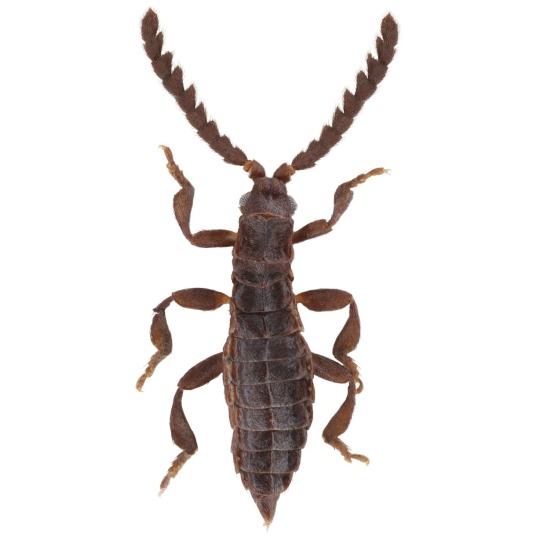
(Image: A museum specimen of Xenomorphon baranowskii by Ferriera et al. 2023)
If you like what I do, consider leaving a tip or buying me a ko-fi!
#xenomorphon baranowskii#Coleoptera#Lycidae#net winged beetles#beetles#insects#arthropods#Incertae sedis#enigmatic taxa#uncharismatic facts
690 notes
·
View notes
Text
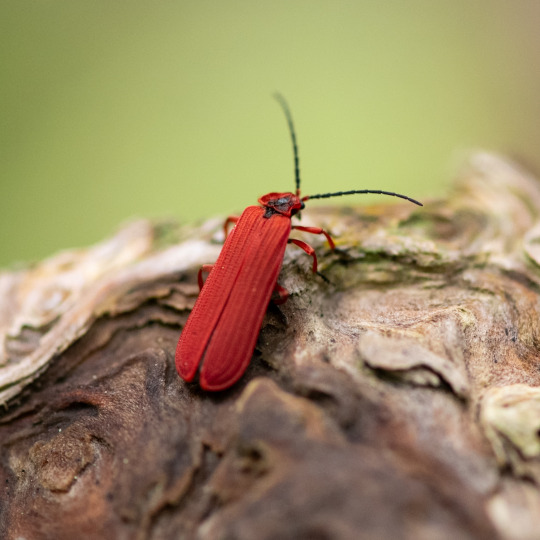
Red-Net Winged Beetle, love these guys!!!
#artists on tumblr#original photographers#original photography#hiking#pacific northwest#nature#washington#nikon#pnw#orofeaiel#bugs#insects#beetle#red#green#forest finds#colorful#creatures#entomology#red net winged beetle
202 notes
·
View notes
Text

a trio of banded net-winged beetles (Calopteron reticulatum or C. discrepans) engaged in some sort of indescribable debauchery
net-winged beetles (Lycidae) are one of several families closely related to fireflies, but while most members of this group are carnivorous as larvae, those of lycids feed on slime molds and fungi.
(Massachusetts, 8/11/23)
#beetles#lycidae#net-winged beetles#calopteron#calopteron reticulatum#coleoptera#bugblr#bugs#insects#entomology
330 notes
·
View notes
Text

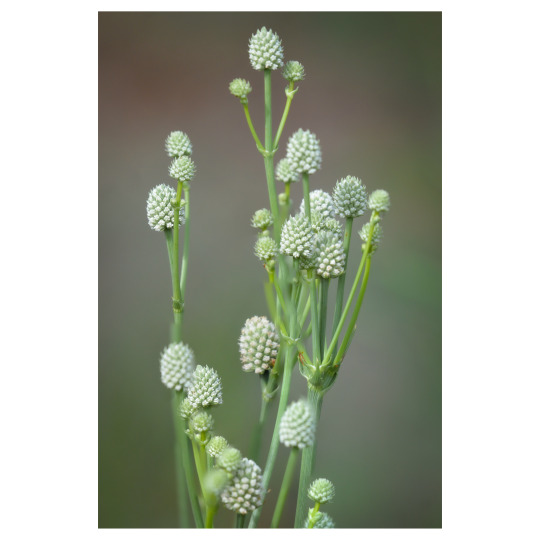
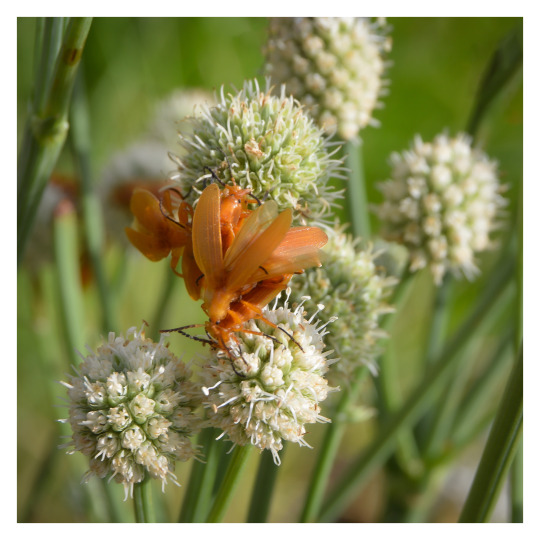

Endangered Arizona eryngo (Eryngium sparganophyllum), blooming at Ash Canyon Bird Sanctuary. The bright orange insects pollinating and fornicating on the flowers are a species of net-winged beetle, Lycostomus loripes. The plant is restricted to sensitive cienega habitats in southeastern Arizona and Sonora, and was listed as endangered last year.
#photographers on tumblr#Arizona eryngo#Eryngium sparganophyllum#net-winged beetles#Lycostomus loripes#Cochise County#Arizona
103 notes
·
View notes
Text
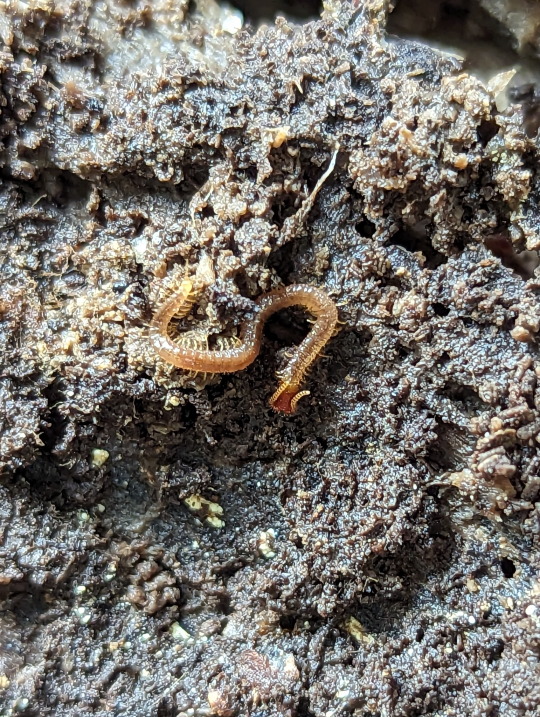

Photo 1 - Geophilomorpha sp. / Photo 2 - Pyrgodesmidae sp.

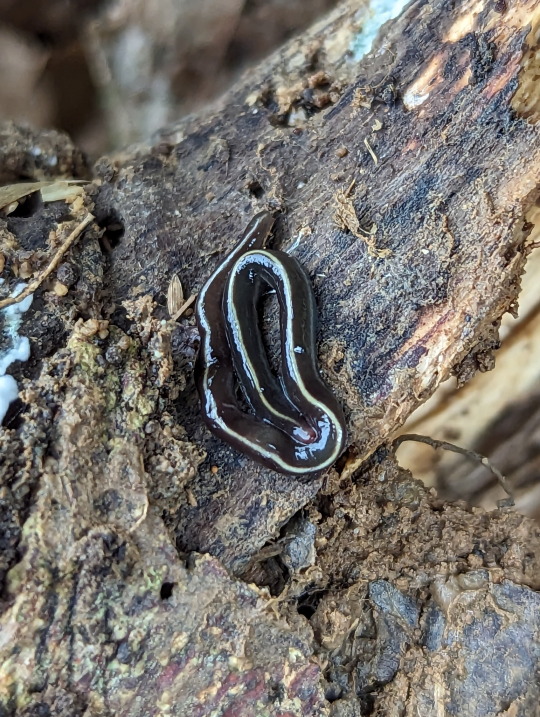
Photo 3 - Lycidae sp. / Photo 4 - Caenoplana coerulea

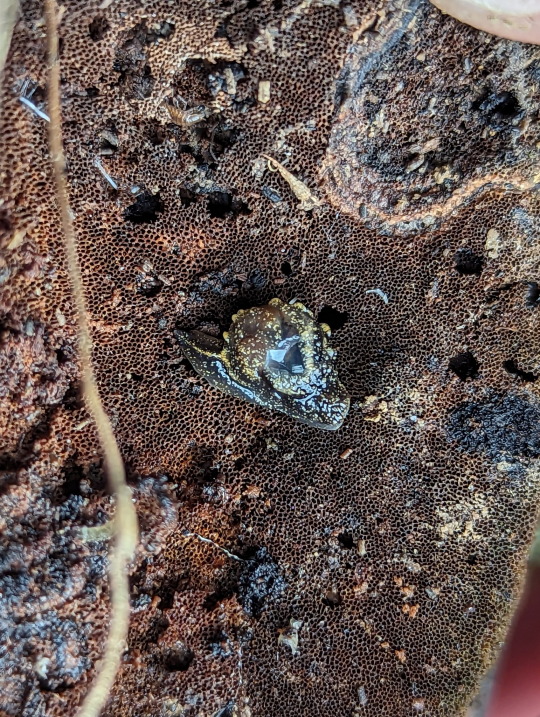
Photo 5 - Polydesmida sp. / Photo 6 - Fastosarion brazieri

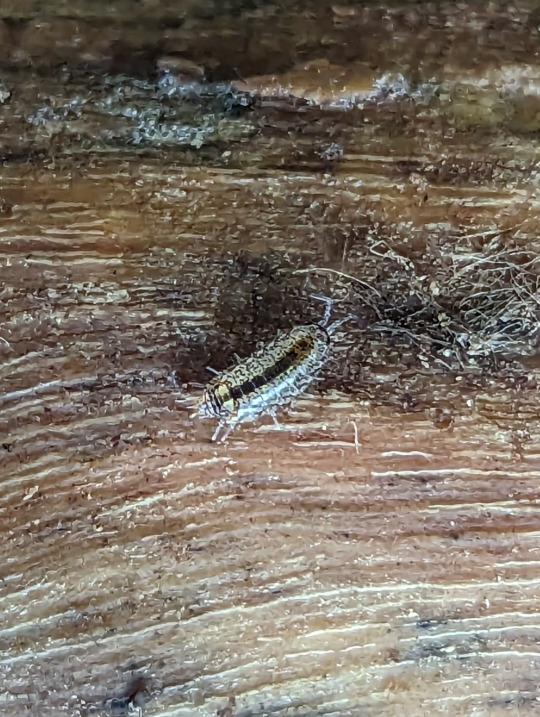
Photo 7 - Polydesmida sp. / Photo 8 - Philosciidae sp.
Various creatures found beneath rotting logs and bark.
30/06/23
QLD:WET, El Arish, remnant on farmland
#invertblr#invertebrates#Arthropods#Arthropoda#bugblr#entomology#Lycidae#Net-winged Beetles#coleoptera#beetles#Caenoplana coerulea#Blue Garden Flatworm#Platyhelminthes#flatworms#planarians#land planarians#Geophilomorpha#Soil Centipedes#Chilopoda#Centipedes#Myriapoda#Myriapods#Polydesmida#Flat-backed Millipedes#Diplopoda#Millipedes#Fastosarion brazieri#Chameleon Semi-Slug#Stylommatophora#Gastropoda
50 notes
·
View notes
Text


Trilobite Beetle (Platerodrilus paradoxus), female, family Lycidae, Sarawak, Borneo
The males are much smaller, and look like a typical yellow and black net-winged beetle. The females... look like this (retaining a larval form).
The females can grow up to 8 cm (3.15 in.) in length.
photographs by Nick Volpe
#trilobite beetle#platerodrilus#lycidae#beetle#coleoptera#insect#entomology#animals#nature#borneo#asia
3K notes
·
View notes
Text
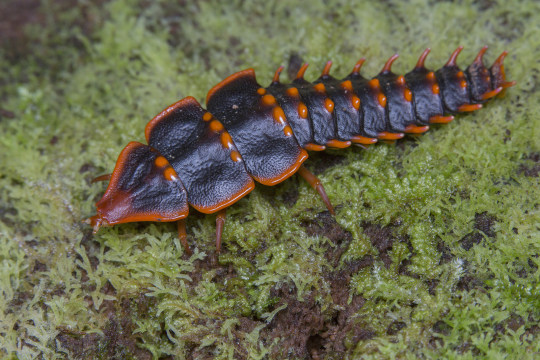

Trilobite beetle Also known as Platerodrilus; these are a genus of beetles of the family Lycidae. The females retain a larval form as adults and are about 40–80 mm in length. The Lycidae are a family in the beetle order Coleoptera, members of which are commonly called net-winged beetles. Follow my page for more epic, silly and boomblu content; share so I can grow if you wish, and come visit my other socials at my Linktree [Just click the word Linktree, it's hyperlinked :)]. Check out the rest of my posts too!!! A lot of them are underrated. ;o Like everything you find interesting if you want. :3
────────────────────────────────────────────
⇾ Follow my page for more epic, silly and boomblu content; share so I can grow if you wish, and come visit my other socials at my Linktree [Just click the word Linktree, it's hyperlinked :)]. ⇽
Check out the rest of my posts too!!! A lot of them are underrated. ;o Like everything you find interesting if you want. :3 Remember, you can find all of my socials here (click the word [here], it's hyperlinked (。◕‿‿◕。) For the plain link; here it is: https://lynkfire.com/Gliphel&Glyph%20LLC%20Incorperated Also; if you prefer Linktree, it's here.
1K notes
·
View notes
Photo

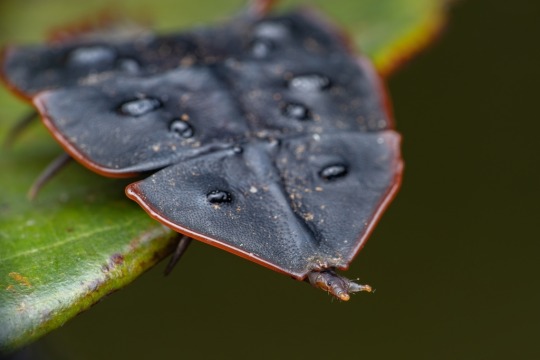

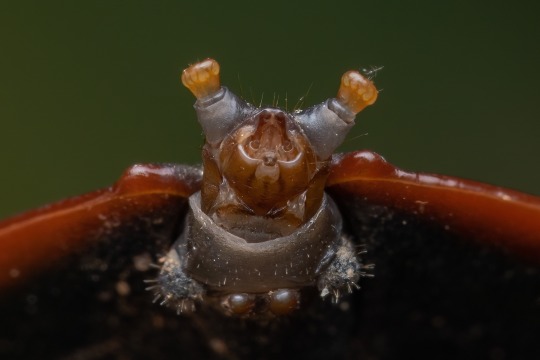
Trilobite beetle, Platerodrilus ruficollis?, Lycidae
Photographed in Malaysia by nadjabaum
#animals#curators on tumblr#insects#bugs#beetle#net winged beetle#trilobite beetle#larviform female#Platerodrilus ruficollis#one nice bug#while i'm on the topic of trilobite beetles#have this one#i love her
5K notes
·
View notes
Text


[PHOTOS TAKEN: AUGUST 6TH, 2024 | Image IDs: Two photos of a black and orange net-winged beetle on a medium sized green leaf /End IDs.]
#Lycidae#Net-winged beetles#Beetles#Beetle#coleoptera#insects#Insect#Bugs#Bug#Bugblr#Entomology#Invertebrates#Inverts#Arthropods#Photos#Photo#Wasp House Sights
14 notes
·
View notes
Note
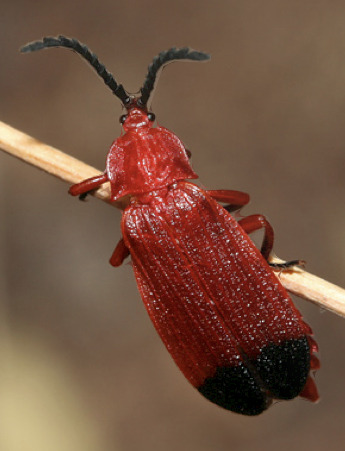
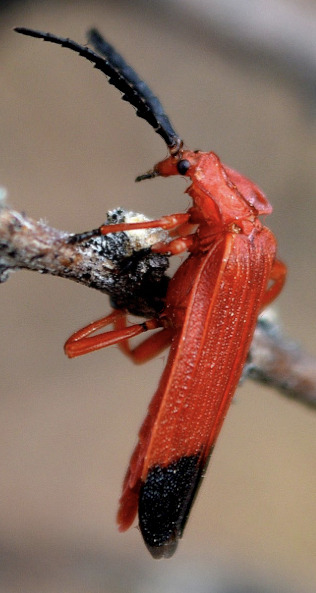
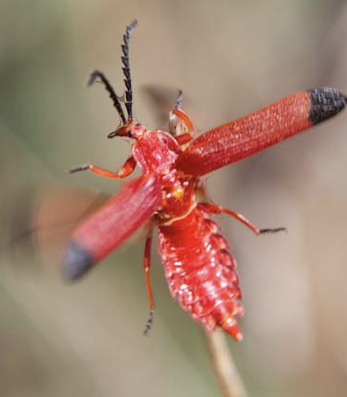
For the elytra thing, how about a bloody net-winged beetle? They’ve got some really interesting designs on their wings, not to mention the incredible colors!
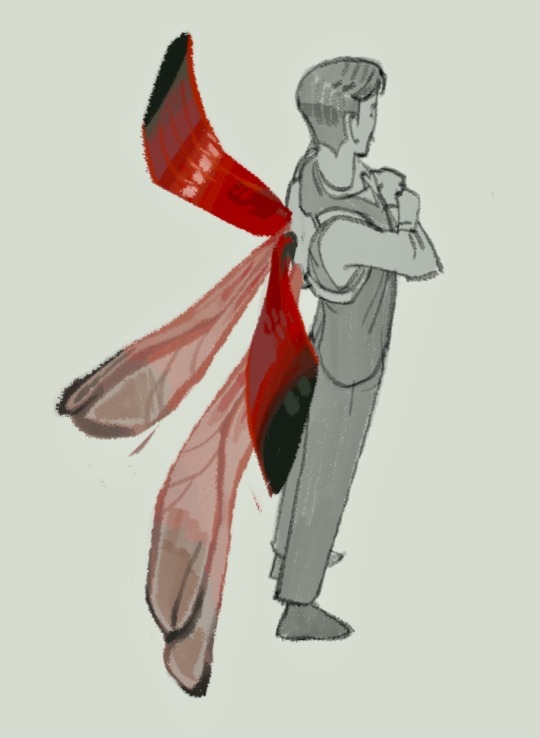
you can’t fool me. that’s clearly a bell pepper
#my art#asks#art asks#mumbo jumbo#bug cw#didn’t manage to get all their fun detail but i love how vibrant these guys are#thank you! :D
289 notes
·
View notes
Note
trick or treat 🎃🦇
Here's a red net-winged beetle (Dictyoptera aurora)!

28 notes
·
View notes
Text


Red Net Winged Beetle - ONP
#artists on tumblr#original photographers#original photography#hiking#pacific northwest#nature#pnw#washington#nikon#orofeaiel#naturecore#goblincore#red net winged beetle#insects#red#entomology#forest finds#look closely#forest floor
45 notes
·
View notes
Note
:ooo do you have a favorite hymenopteran? im fond of the velvet ant, since i saw so many while i was at my last job
It’s hard to narrow it down to just one favorite (we’ll see if I have to do that in this tournament lol), but tbh I am really fond of a lot of wasps, mostly Apoidea. I love Eastern Cicada Killers (Sphecius speciosus) and a lot of the other big guys like the Steel-blue Cricket-hunter (Chlorion aerarium) and Great Black Digger Wasp (Sphex pensylvanicus) are always fun to see in the wild. I love sweat bees too, especially the green ones. One I added to my collection last Summer that I found really beautiful was the Norton’s Nomia (Nomia nortoni) which has pearlescent stripes???
But yeah Velvet Ants are also a great pick, I love seeing them. I saw a male Eastern Velvet Ant (Dasymutilla occidentalis) for the first time this Summer and was really bummed I didn’t have my net with me. (I collect only one male and female of each species.) He had beautiful metallic blue wings. I also used to have 2 pet velvet ants that lived with my death-feigning beetles. Their names were Bambi and Cupcake. 😅
The thing with Hymenopterans is that they’re just so incredibly diverse that it’s hard to pick just one, and that’s one of the reasons I love them so much! And you don’t even have to travel far to see cool ones; there’s a huge diversity of them right in your backyard. I am sitting on the back porch right now watching a Potter Wasp and and Carpenter Bee pollinate my Heuchera.
Photos, cause I guess this can double as Arthropod propaganda, not that it needs it lol:
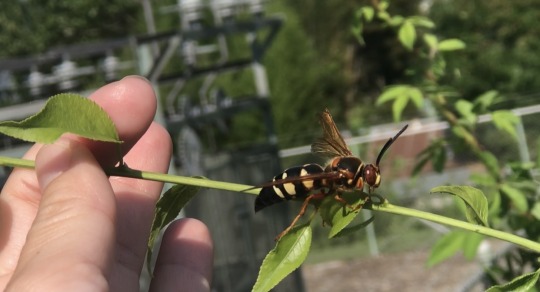
Eastern Cicada Killer (Sphecius speciosus) (own work)

Steel-blue Cricket-hunter (Chlorion aerarium) (source)
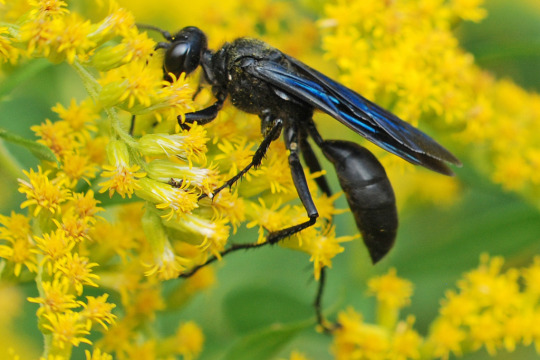
Great Black Digger Wasp (Sphex pensylvanicus) (source)

Pure Green Sweat Bee (Augochlora pura) (source)
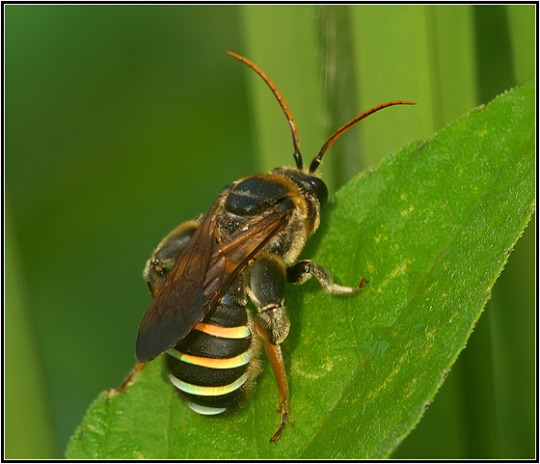
Norton’s Nomia (Nomia nortoni) (source)

Eastern Velvet Ant (Dasymutilla occidentalis) (female, but there is also a photo of a male in the source)

Sacken’s Velvet Ant (Dasymutilla sackenii) (this is what Bambi was, but I don’t remember what exact species Cupcake was) (source)
23 notes
·
View notes